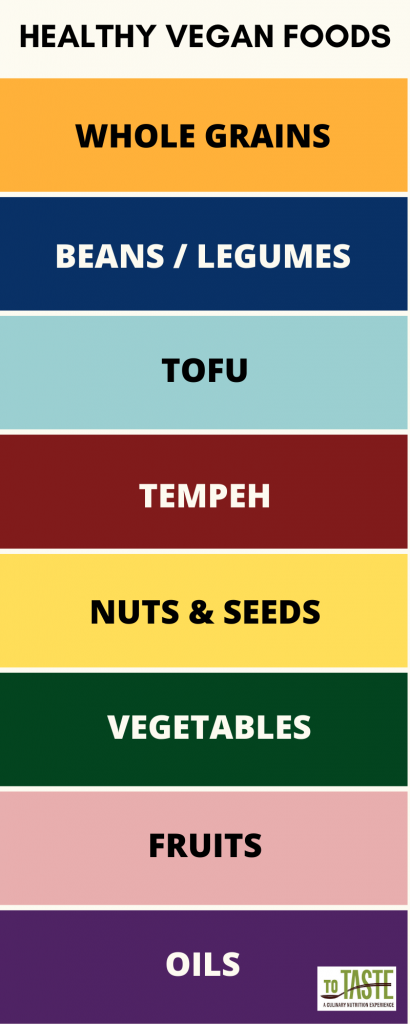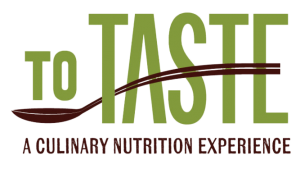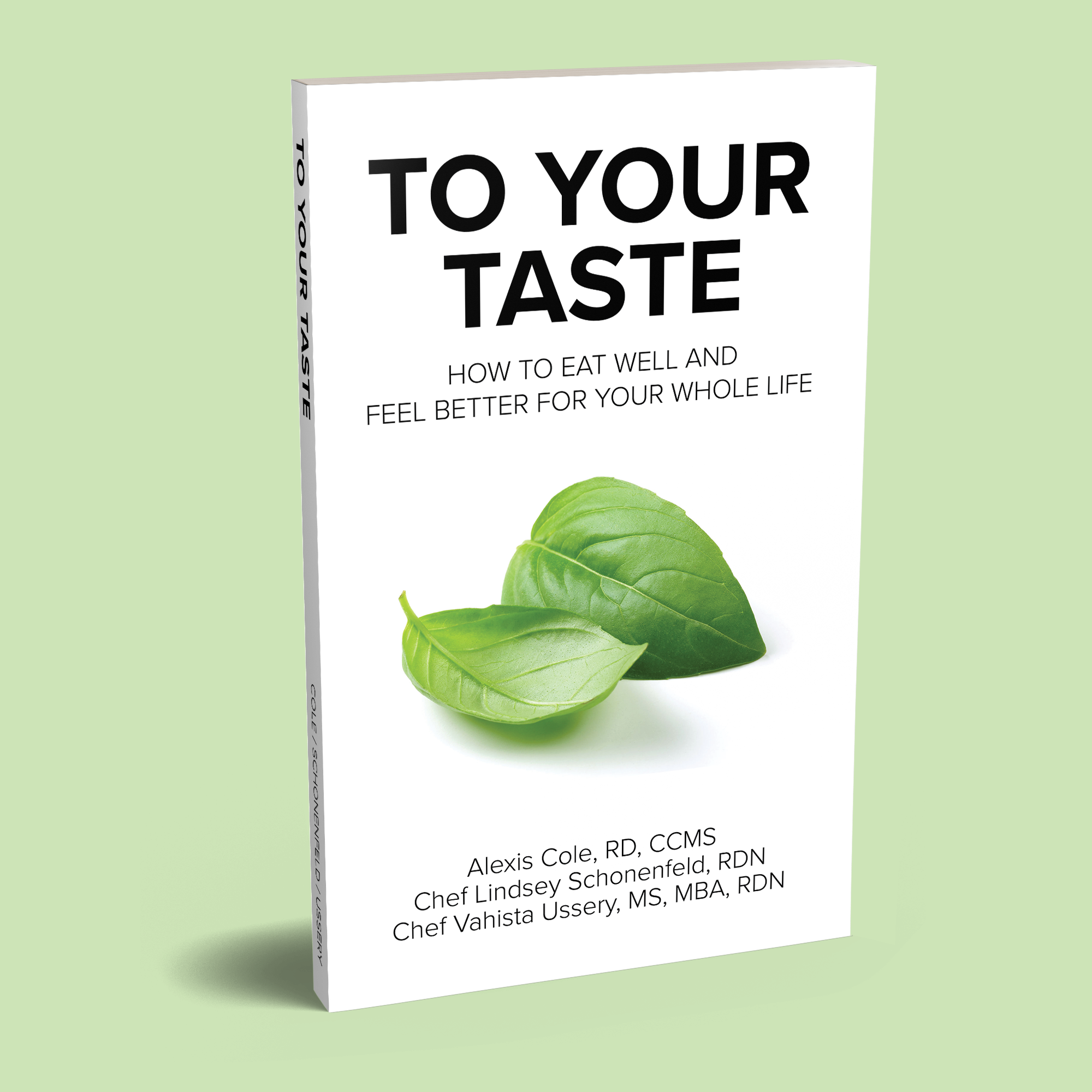Have you ever considered going vegan but didn’t know where to start? “What do vegans eat in a day? Which vegan foods are healthiest? Will I get all of the nutrients that I need? Is being vegan expensive?” Although none of the dietitians at To Taste are vegan, we get asked questions about this diet all of the time. All of us have experimented with following a vegan diet, and although none of us kept it going (for various reasons), we are happy to share our findings and what the research says. Learning how and what to eat on a vegan diet can seem like a significant undertaking at first, but in this article, we cover vegan diet benefits and drawbacks, healthy vegan recipes, vegan meal prep strategies, and some helpful vegan resources.
What does “vegan” mean?
Vegan, plant-based, plant forward, vegetarian, raw food vegan…there can be a lot of confusion and nuance around each of these lifestyle and dietary patterns. Let’s start by defining some terms that are often used interchangeably but that actually mean very different things.
- Vegan: does not consume any foods or products produced by an animal (e.g. meat, fish, poultry, eggs, dairy, honey, leather, certain cosmetic products, etc.). People may choose to be vegan for environmental, ethical, spiritual, or health reasons.
- Vegetarian: consumes mostly plants, with the exception of a few animal products. The most common form of vegetarianism – lacto-ovo-vegetarian – does not allow consumption of meat, poultry, or fish, but allows eggs and dairy products.
- Plant-Based / Whole Food Plant Based (WFPB): refers to ingredients and foods themselves, i.e. fruits and vegetables (produce); whole grains; beans, legumes (pulses), and soy foods; nuts and seeds; plant oils; and herbs and spices (1).
- Plant-Forward: often used synonymously with “vegetable-centric,” “vegetable-forward,” and “plant-centric.” Refers to the style of cooking and eating that emphasizes and celebrates these foods, but is not limited to them.
- Raw Vegan: follows all principles of veganism, plus excludes foods that are cooked above 120ºF. The highly restrictive nature of this diet makes it difficult to follow and sustain and could potentially lead to nutrient deficiencies.
- Junk Food Vegan: does not consume any animal products (meat, poultry, fish, eggs, dairy), but still consumes many highly-processed foods that do not support or promote health (e.g. potato chips, meat alternatives, dairy-free desserts, packaged snack foods, etc.).
Benefits of Following a Vegan Diet
There are many positives of following a vegan diet, some of which include health, environmental, and financial benefits.
Health Benefits
Adopting a vegan diet can have many positive health outcomes. People that follow whole food, plant-based diets tend to have healthier body weights, decreased reliance on medications, and lower rates of cancer, cardiovascular disease, and type 2 diabetes. (2, 3, 4, 5, 6, 7) Additionally, plant-based diets tend to be significantly higher in fiber than animal-based diets. (8) Increased fiber consumption promotes a healthy immune system, proper bowel movements, mood regulation, decreased cancer risk, good cholesterol levels, and appetite regulation.
Environmental Benefits
Plant-based diets also promote environmental health, as plants require significantly less water and resources to grow, produce, and distribute. Locally-grown products are also often better for the environment, as they do not use large amounts of fossil fuels to be transported across the country or world. (9, 10, 11)
Financial Benefits
Plant-based diets tend to be less expensive than animal-based diets. Unprocessed, whole, plant foods tend to cost less than their animal counterparts. (12) Dry beans, whole grains, fresh/frozen/dried fruits and vegetables are some of the most cost effective foods to include when following a plant-based diet on a budget.
Drawbacks of Following a Vegan Diet
There are also several potential drawbacks of following a vegan diet, which include health risks, required planning, and difficult long term maintenance.
Health Risks
Animal foods contain several nutrients that are not found in significant amounts in plant foods, so avoiding animal products can potentially lead to nutrient deficiencies (more on this in the next section). Additionally, many highly processed vegan foods may give the appearance of being healthy simply because they are vegan. However, these foods often have excessive amounts of calories, sugar, salt, and fat; overconsumption of these ingredients can increase disease risk.
Requires Careful Planning
Without careful planning, a vegan diet can lack many essential nutrients. Additionally, people following vegan diets have to be more aware when dining out and be able to identify restaurants and menu items that are suitable for their preferences. Social gatherings can also be a challenge. Either plan to bring food that you know you can eat, or talk with the host beforehand about your dietary restrictions and try to make accommodations that will work for both you and the group. Finally, without planning, a vegan diet can be expensive if you are overly reliant on prepared or processed vegan food products.
Could Be Difficult to Maintain
In general, we are not proponents of diets that do not support or encourage long term healthy eating patterns. Therefore, if you are wanting to follow a vegan diet for weight loss, we urge you to consider other options first, such as the Mediterranean Diet. The highly restrictive nature of a vegan diet might dissuade you from adhering to it long term, which could lead you back to your original unhealthy eating patterns. Also, without a common understanding of your goals in following a vegan diet, it may be challenging to maintain the social and cultural pleasures of dining with others.
We’re not saying that these challenges are insurmountable; these are just important considerations to take into account to understand why veganism fails for many people.
What Can Vegans Eat?
The easier question to answer is “what can’t vegans eat?” Simply, any foods made from, of, with, or by an animal. Meat, poultry, seafood, dairy, eggs, and honey are not allowed on a vegan diet.
What to Eat on a Vegan Diet
What should I eat when starting a vegan diet? As with any diet, consuming whole, minimally-processed foods is the best choice for your body and for the planet. Here is a list of foods that vegans should eat in order to satisfy most of their nutrient needs:
- Whole Grains
- Beans/Legumes
- Tofu
- Tempeh
- Nuts
- Seeds
- Fruits
- Vegetables
- Healthy Oils

What Not to Eat on a Vegan Diet
As vegan diets have become more popular, more and more vegan food products have entered the market at grocery stores, sit-down and fast food restaurants, and online shopping retailers. Although these foods may give the illusion of being healthy because they are marketed as vegan, many of these products are loaded with excess calories, sugar, fat, salt, and artificial ingredients – none of which promote health. Beyond vegan food substitutes (e.g. burgers, hot dogs, pizza, desserts, etc.), there are lots of other foods that are naturally vegan (e.g. french fries, soda, potato chips, etc.) that do not promote health. It is best to limit the following foods as much as possible.
- Highly-processed meat substitutes (vegan burgers, hot dogs, sausages, bacon, lunch “meats”, chik’n nuggets, etc.)
- Vegan ice cream
- Fried foods
- Soda
- Pastries
- Refined flours
- Chips
- Cookies
- Crackers
Nutrients of Concern on a Vegan Diet
While it is possible to receive most essential nutrients from a vegan diet, there are a few that are especially important to pay attention to when following a vegan diet: protein, omega-3 fatty acids, iron, calcium, Vitamin B12, and Vitamin D. All of these nutrients play important roles in overall health, and ensuring adequate intake can help you feel your best. Because most of these nutrients are found in animal products, one may have to use some planning and creativity in order to ensure adequate intake when following a vegan diet.
Protein
A lot of people ask how vegans get enough protein. Did you know that the average adult only needs about 50-70 grams of protein per day? Most people eat 70-100 grams per day! (13, 14) Therefore, most vegans don’t have trouble meeting their protein requirements.
Beans, legumes, grains, nuts, seeds, and vegetables all provide protein. Animal proteins, soy, quinoa, and amaranth are considered complete proteins because they contain all 9 essential amino acids. Most other plant-based proteins are considered incomplete because they lack at least one essential amino acid. However, by consuming a variety of plant-based foods throughout the day, it’s very easy to consume all of the amino acids that the body needs.
Here are a few examples of meals with ~ 20 grams of plant-based protein:
- 1 cup cooked quinoa + ½ cup black beans + 1 ounce pumpkin seeds
- 3 ounces cooked chickpea pasta + 1/2 cup red sauce + 1 cup broccoli
- 2 slices whole grain bread + 2 Tablespoons almond butter + 2 Tablespoons ground flaxseed
- ¼ cup hummus + 1 whole wheat pita bread + spinach salad with 1 ounce toasted almonds
- ½ cup pan-fried tofu + 1 cup brown rice + 1 cup mixed veggies
- 3 ounces baked tempeh + 2 corn tortillas + ¼ cup salsa
- 1 ½ cups four bean chili + ½ avocado
- ⅓ cup maple pecan granola + 2 Tablespoons peanut butter + 2 Tablespoons ground flax seeds + 1 cup plant-based milk
- 2 slices whole grain toast + ½ avocado + 2 Tablespoons sunflower seeds
- ½ cup oats + 1 cup nut milk + 2 Tablespoons chia seeds + 2 Tablespoons nut butter
Omega-3 Fatty Acids
Omega-3 fatty acids are essential for brain and heart health. The best dietary sources are from fatty fish, such as salmon, sardines, and tuna, grass-fed meat, and some fortified eggs and dairy products.
Because vegans don’t eat fish, meat, dairy, or eggs, plant-based sources of these fats are important. Walnuts, flaxseeds, chia seeds, hemp seeds, as well as some fortified milks are the best plant-based sources of omega-3 fats. Note that these forms of omega-3 fats do not contain EPA or DHA (found in fatty fish), so they may not be quite as effective in protecting your heart and brain. However, it is still important to include plant-based sources of omega-3 foods on a weekly to daily basis to ensure optimal health. (15)
Iron
Iron is an essential mineral that transports oxygen throughout the body. An iron deficiency can lead to fatigue, depression, irritability, weakened immune function, poor circulation, and decreased cardiovascular endurance. (16)
Although most people consider meat to be the primary dietary source of iron, many plant-based foods contain iron as well. Lentils, spinach, white beans, dried fruit, fortified grains, and blackstrap molasses are all vegan sources of iron. Pair these foods with Vitamin C-containing foods such as tomatoes, bell pepper, potatoes, or citrus to increase iron absorption. (17)
Calcium
Calcium is important for bone health, heartbeat rhythm, nerve contraction, blood clotting, and hormone production. (18) Peak bone mass occurs around age 30, so it is especially important for children, adolescents, and young adults to consume adequate amounts of calcium. (19)
Vegan sources of calcium include fortified tofu & tempeh, fortified plant-based milks and yogurts, beans, legumes, leafy green veggies, almonds, Brazil nuts, and sesame seeds. (20)
Vitamin B12
Vitamin B12 is important for metabolism, DNA synthesis, blood cell formation, and nerve protection. (21) It is a nutrient that is found almost exclusively in animal foods, so supplementation is important.
Many vegan products, such as plant based milks, nutritional yeast, and meat substitutes are fortified with B12. However, if you aren’t eating these foods daily, a standard multivitamin or a B12 supplement should cover your bases.
Vitamin D
Also known as the sunshine vitamin, Vitamin D is a pro-hormone that is essential for bone health, immunity, and disease prevention. Vitamin D can be synthesized through the skin by receiving 5-30 minutes of direct midday sunlight. Many dairy foods are fortified with Vitamin D to increase calcium absorption.
Vegan sources of dietary Vitamin D include mushrooms, fortified soy products, fortified cereals, and of course, sunshine. If your environment, job, or school prevents you from getting daily sunshine, a Vitamin D supplement may be a good choice. (22)
Before starting any supplement regimen for any of these nutrients, consult with your primary healthcare provider.
Vegan Recipes
What do vegans eat for breakfast, lunch, and dinner? We’ve broken down some lists of simple recipes for a plant-based diet that can help you get started.
Vegan Breakfast Ideas
Baked Oatmeal Cups Base Recipe
Dairy-Free Banana Berry Smoothie
Vegan Pumpkin Spice Smoothie – Ginger Hultin, MS, RDN, CSO
Chunky Vegan Pumpkin Pie Granola – Erin Cooper, RD
Vegan Blueberry Oatmeal Bake – Kelli Shallal, MPH, RD
Vegan Lunch Ideas
Mediterranean Lentil Salad with Roasted Red Peppers
Vegan Black Eyed Peas and Quinoa with Pineapple Salsa – Chrissy Carroll, RD
Super Duper Raw Power Salad – EA Stewart, RDN
Vegan Mediterranean Salad with Prunes – Amy Gorin, MS, RDN
Vegan Dinner Ideas
Vegetable Stir Fry Base Recipe
Vegan Shepherd’s Pie – Shahzadi Devje, Msc, RD, CDE
Savory Vegan Stuffed Acorn Squash Recipe with Wild Rice – Melissa Nieves, LND, RD, MPH
One Pan Pasta with Chickpeas and Tomatoes – Melissa Altman-Traub, MS, RDN, LDN
Vegan Eggplant Teriyaki – Lizzie Streit, MS, RDN, LD
Mediterranean Sweet Potatoes with Vegan Tahini Dressing – Alena Kharlamenko, MS, RD
Vegan Snack Ideas
Dark Chocolate Covered Fruit Bites Base Recipe
Easy & Healthy Avocado Brownies – Megan Byrd, RD
Peanut Butter Cereal Bars – Elizabeth Ward, MS, RD
Vegan Oatmeal Cookies – Leanne Ray, MS, RDN
Everything Bagel Pumpkin Seeds – Laurel Deininger, MS, RDN, CDE
Helpful Vegan Resources
Whether you are a plant-based veteran, or are just learning how to start a vegan diet, there are endless opportunities to learn about this way of eating. Here are some helpful resources as you continue along your health journey. Although we recommend these as helpful resources, we don’t necessarily endorse everything claimed or stated in them (besides our own articles!).
To Taste Articles
Plant-Based Meal Prep: Preserve your Time, Money, and Health
Plant Based Milk vs. Cow’s Milk: Which is Better?
Vegetarian Lunch Ideas for Kids
Plant-Based Books & Cookbooks
In Defense of Food – Michael Pollan
Fiber Fueled – Will Bulsciewicz, MD
How Not to Die – Micael Greger, MD, FACLM
How Not to Die Cookbook – Michael Greger, MD, FACLM
The Blue Zones – Dan Buettner
The Blue Zones Kitchen Cookbook – Dan Buettner
The New Vegetarian Cooking for Everyone – Deborah Madison
Power Plates – Gena Hamshaw
Podcasts / Videos
The Nutrition Show with Mary Purdy
Websites
Physician’s Committee for Responsible Medicine
T. Colin Campbell’s Center for Nutrition Studies
Again, none of the dietitians at To Taste follow a vegan diet plan. Instead, we all follow and promote a plant-forward eating approach and get the majority of our nutrients from plant sources.
However, if you are interested in following a vegan diet for environmental, physical, or ethical reasons, we hope that this article provided some helpful tools for navigating the vegan diet for beginners.
If you’re interested in adopting this lifestyle eating pattern, give it a try for a few weeks and see how you feel! We’d love to hear about your experience; let us know in the comments section below!
To YOUR Taste!
Lexi










